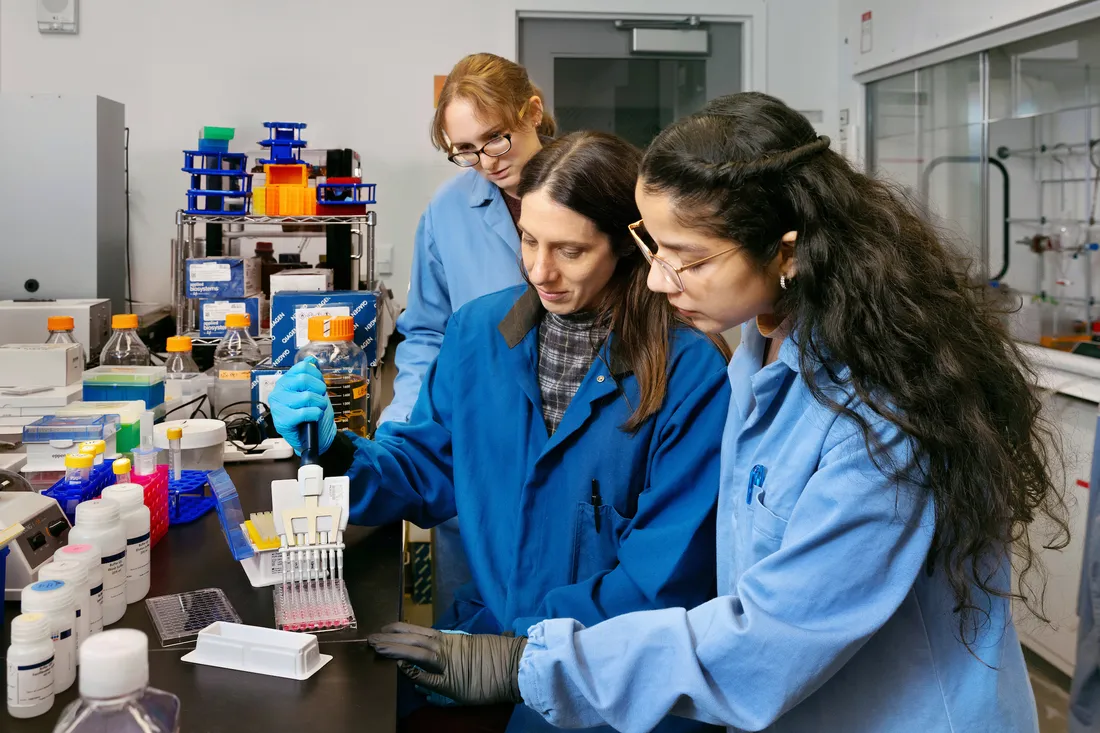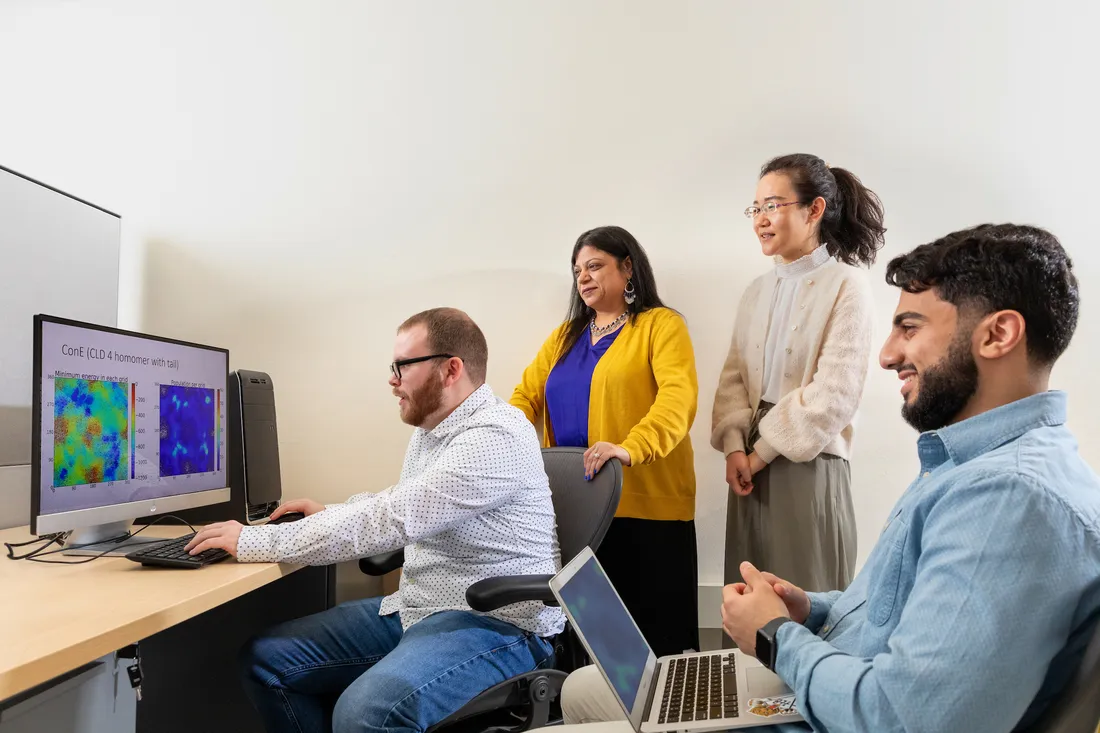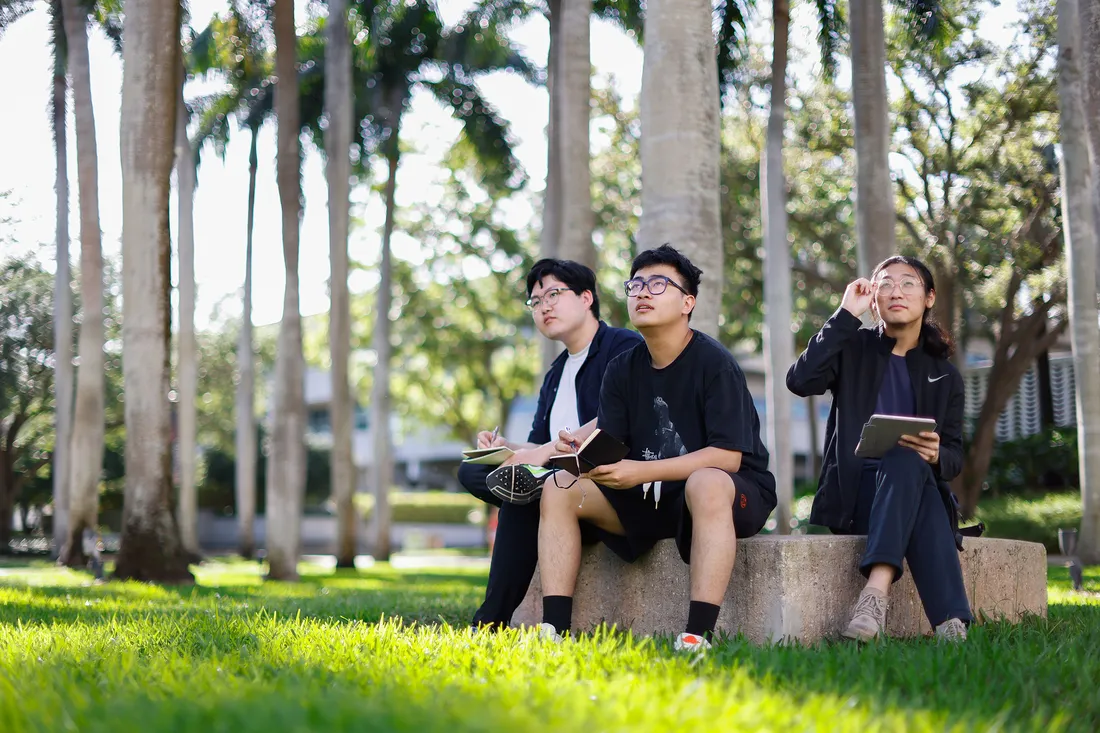
For many Syracuse University students, spring break means a hands-on learning experience doing field research with classmates at locations around the country and the world.
Syracuse University offers courses that include field research and experiential learning around the country and the world. These academic trips allow students to contextualize classroom learning in real world settings, deepen cultural understanding and, of course, have an extraordinary and unforgettable educational experience.
Building for Sea Level Rise in Florida
Every semester, School of Architecture students have opportunities to learn from visiting industry professionals from around the world and engage in projects that involve immersive field research at the sites where their projects are based.
This spring, in a studio led by architects Laura Salazar and Pablo Sequero, students embarked on what will be a multiterm collaboration between the School of Architecture and a community near Miami Beach, Florida, in an area projected to experience significant sea level rise in coming decades.
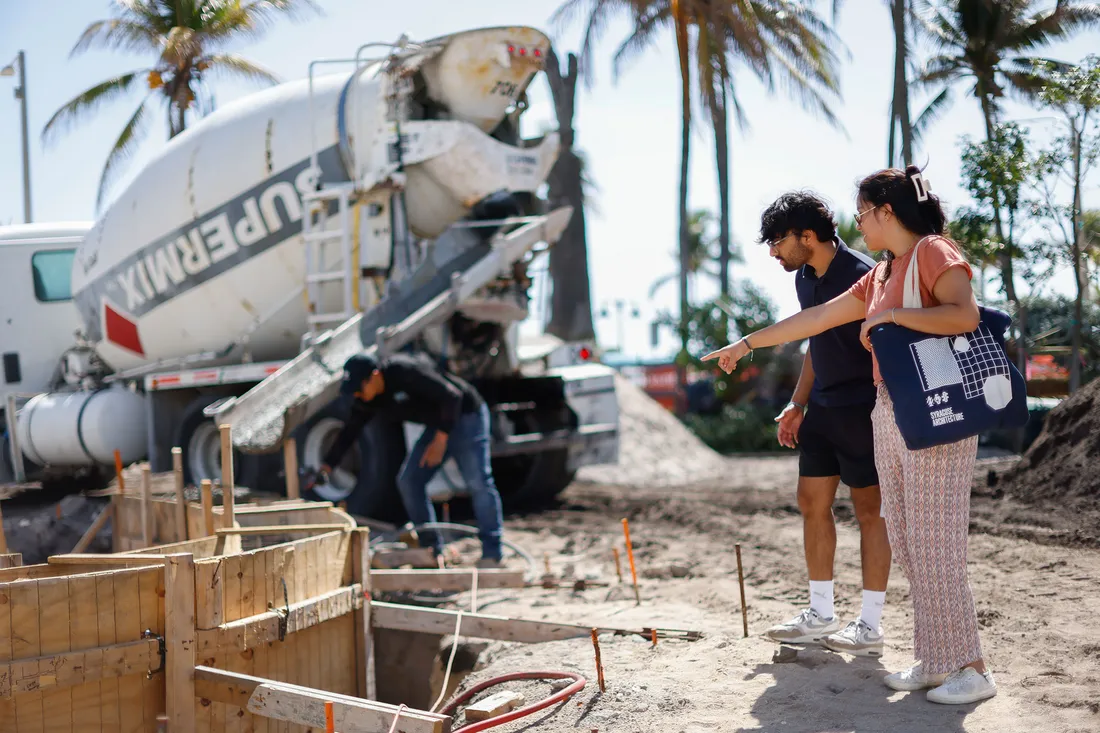
School of Architecture students visited construction sites in Miami Beach, Florida, as part of their research toward designing resilient homes for areas affected by sea level rise.
While on campus, students researched ecological, hydrological, cultural and sociopolitical dimensions of this community and developed designs for single-family homes that expressed concepts of resilience in the face of pending environmental change.
Salazar and Sequero note that the work the students are doing, which draws inspiration from a diversity of traditional and contemporary approaches to coastal living, generates ideas that are applicable to ocean-side communities worldwide in the era of climate change.
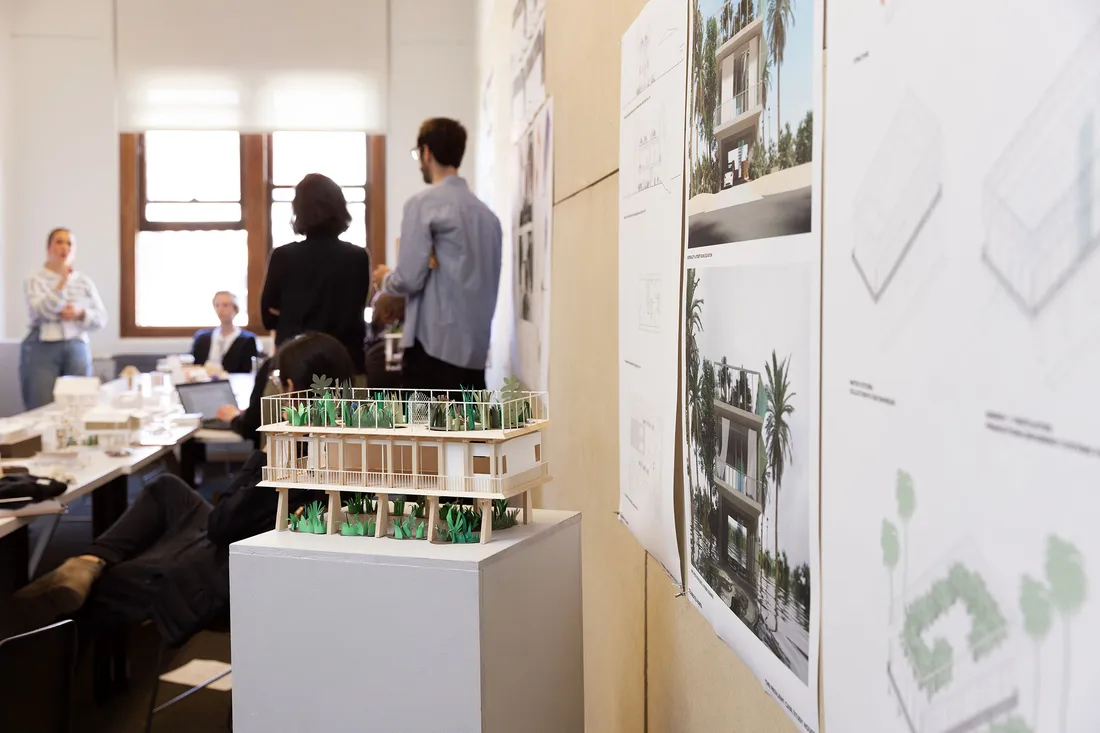
“Conceptually, our models represent an exploration of alternative ways of living,” explains Max Walewski ’26, who says it was valuable to get feedback from stakeholders and industry experts.
Max Walewski ’26, whose design focused on structures that could be rebuilt quickly, sustainably and affordably after storm destruction, says that receiving feedback from government officials and town planners was particularly valuable. “Conceptually, our models represent an exploration of alternative ways of living,” he says. “It was really interesting to learn some of the cultural norms and constraints—such as the way square footage is valued, and the everyday challenges residents face—that we’ll have to respond to in designs of today while still trying to build for the future.”
It was really interesting to learn some of the cultural norms and constraints—such as the way square footage is valued, and the everyday challenges residents face—that we’ll have to respond to in designs of today while still trying to build for the future.
Max Walewski ’26
New Perspectives From Mexico
Eleven graduate students with widely diverse research interests traveled to Mexico City over spring break on a trip designed to provide insight into the historical and contemporary dynamics shaping relations between Mexico and the United States.
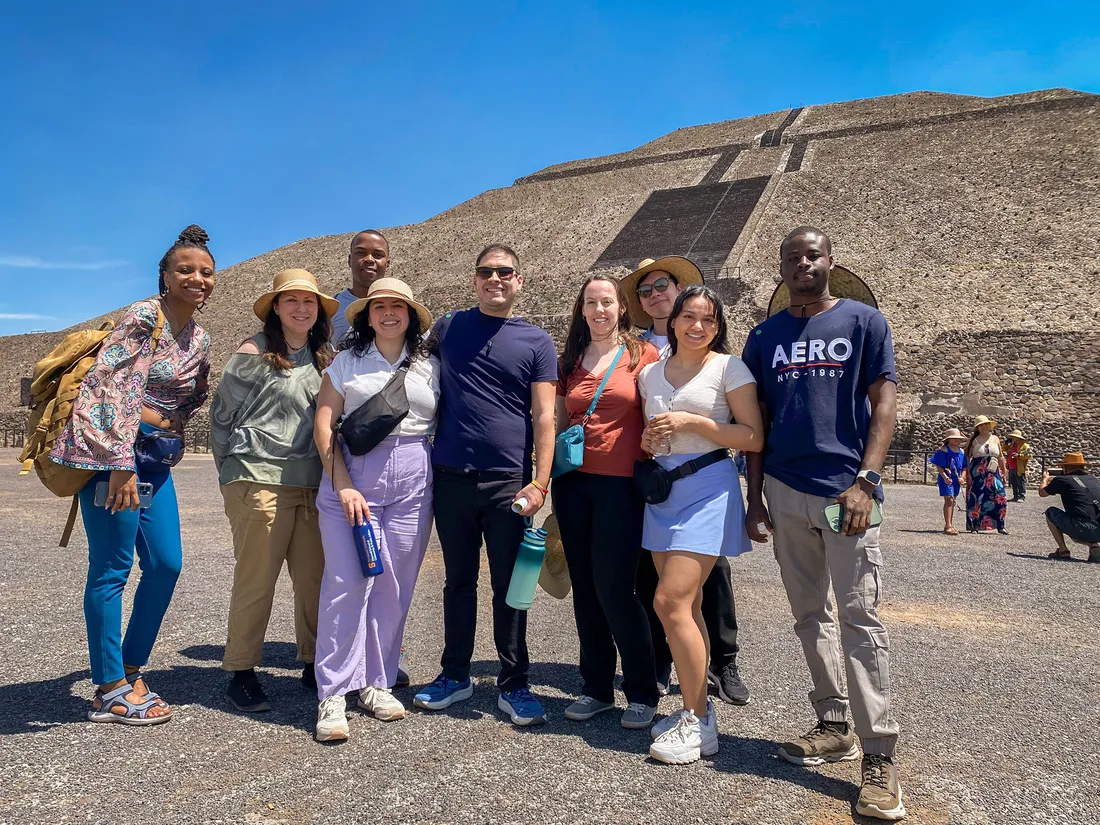
Graduate students visited Mexico City and historical sites in the area and gained insight into issues defining relations between Mexico and the United States.
The trip was organized by Gladys McCormick, history professor and the Jay and Debe Moskowitz Endowed Chair in Mexico-U.S. Relations in the Maxwell School of Citizenship and Public Affairs. Maxwell alumnus Jay Moskowitz ’75 and his wife Debe also sponsored the trip, which offered students opportunities to learn about issues related to immigration and security from perspectives centering the lives and concerns of people in Mexico. “The trip to Mexico put what the students have been thinking about at an intellectual level into the context of the real lives and experiences of those living and working at the front line,” she says.
The trip to Mexico put what the students have been thinking about at an intellectual level into the context of the real lives and experiences of those living and working at the front line.
Professor Gladys McCormick
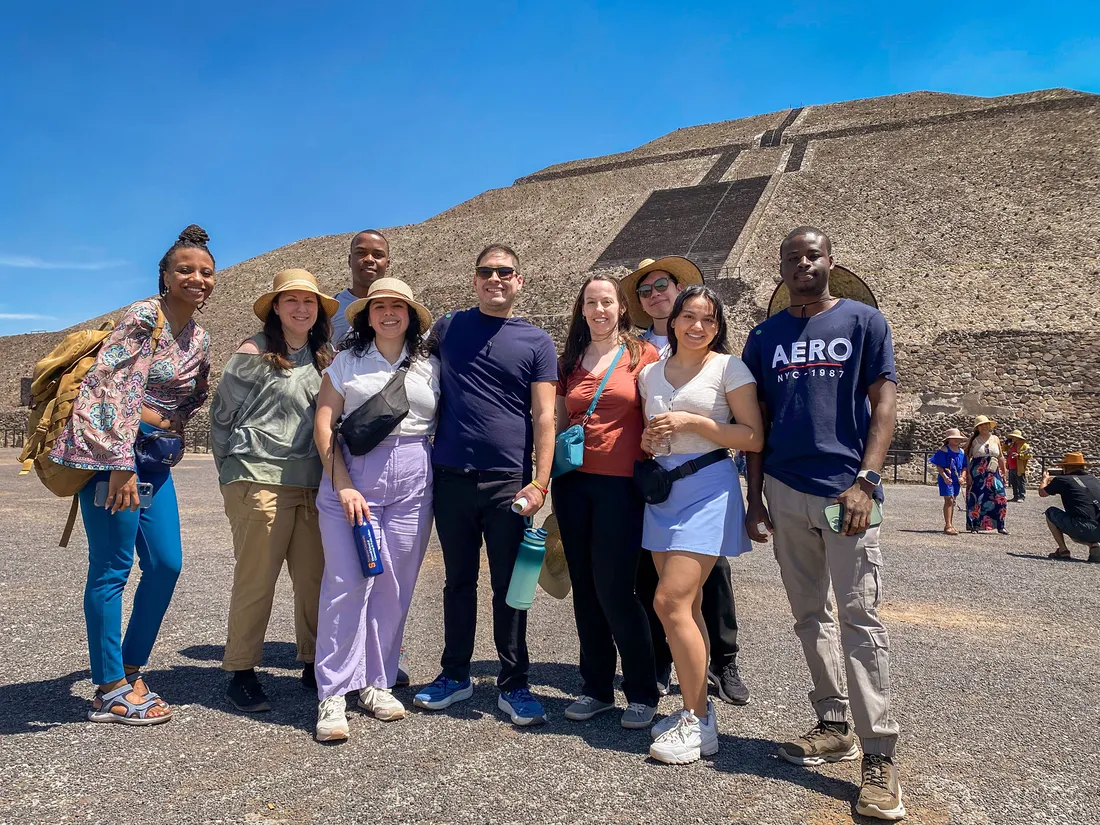
Babatunde Isaac Rotimi G’28, a doctoral student in earth and environmental sciences, appreciated the chance to see firsthand the effects of seismic activity in the communities they visited.
Tehnaya Brewer ’23, G’24, a master’s student studying forensic science with a focus on security studies, appreciated their visit to an agency that helps community members learn about crimes and pursue justice. “This is the kind of work I can see myself doing in the future and it was very profound for me to see a group so passionate about their work,” she says. “It’s really inspiring to see how impactful research can be for a community. Seeing how what I’m studying now can transition into something that is so meaningful to so many people was just amazing.”
Meeting professionals working in a range of roles related to their area of study can be especially important for graduate students, McCormick notes. “They are at the beginning of their careers, so what they get out of a trip like this can have real impact on their next steps in their professional lives.”
Babatunde Isaac Rotimi G’28, a doctoral student in earth and environmental sciences, was fascinated by Mexico’s geological landscape. “I seized the opportunity of this trip to learn on-ground about the tectonics of this area and the effect that earthquakes have had on the country,” he explains. The group saw inactive and semi-active volcanos and piles of volcanic rocks throughout the city and at historic sites they visited. “I was happy to explain to my colleagues the earthquake mechanisms in subduction zones!” he says.
Scoring Insights About Soccer in Italy
In sports economist Rodney Paul’s sports analytics course, students in the David B. Falk College of Sport and Human Dynamics studied how data is revolutionizing the world’s most popular sport: soccer. After months of research and learning from professionals, students traveled over spring break to Italy.
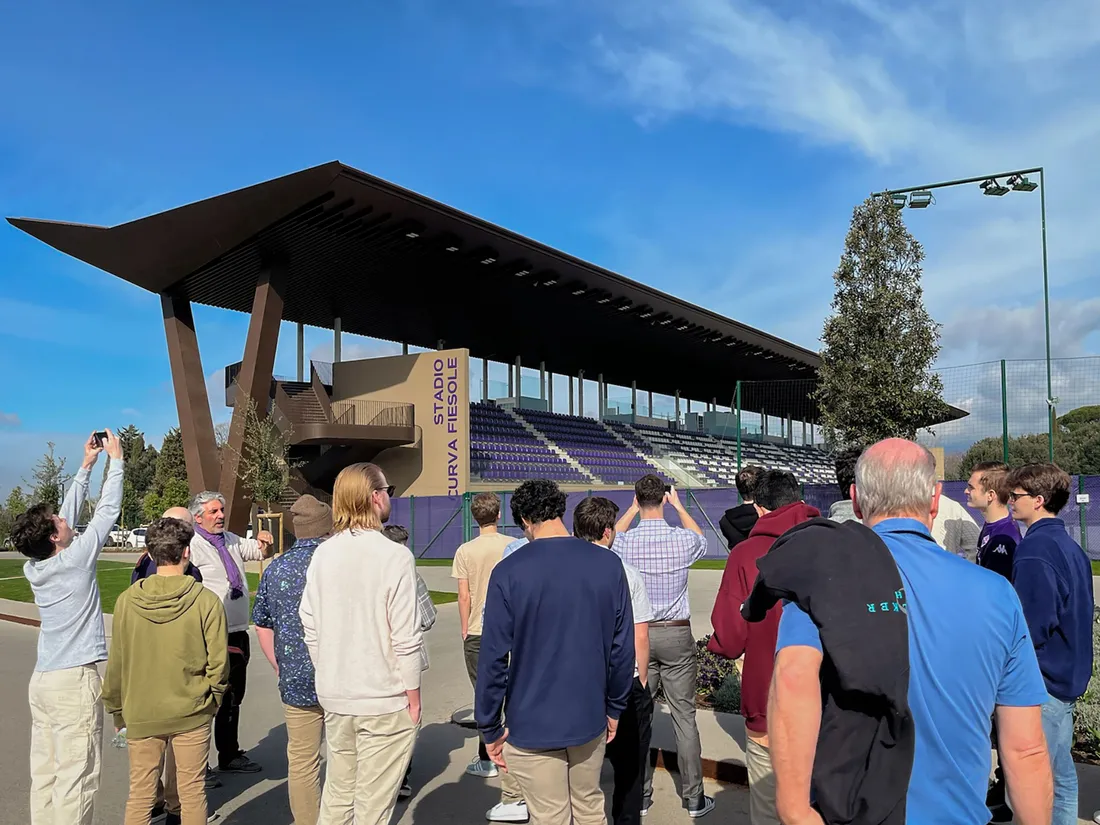
Students studying sports analytics learned how data is influencing professional soccer in Italy, where soccer pays an important role culturally and economically.
Students studied the sport in historical contexts and learned about how it impacts communities. They gained professional experience presenting their statistical analyses to industry professionals at top-tier soccer clubs and traveled to different cities, getting a taste—literally and figuratively—of Italian culture.
For Aidan Corr ’26, attending a professional soccer game in Milan was an experience he’ll always treasure. “It was an experience of a lifetime to watch a professional soccer game in a country where the sport is such a huge part of the culture,” he says.
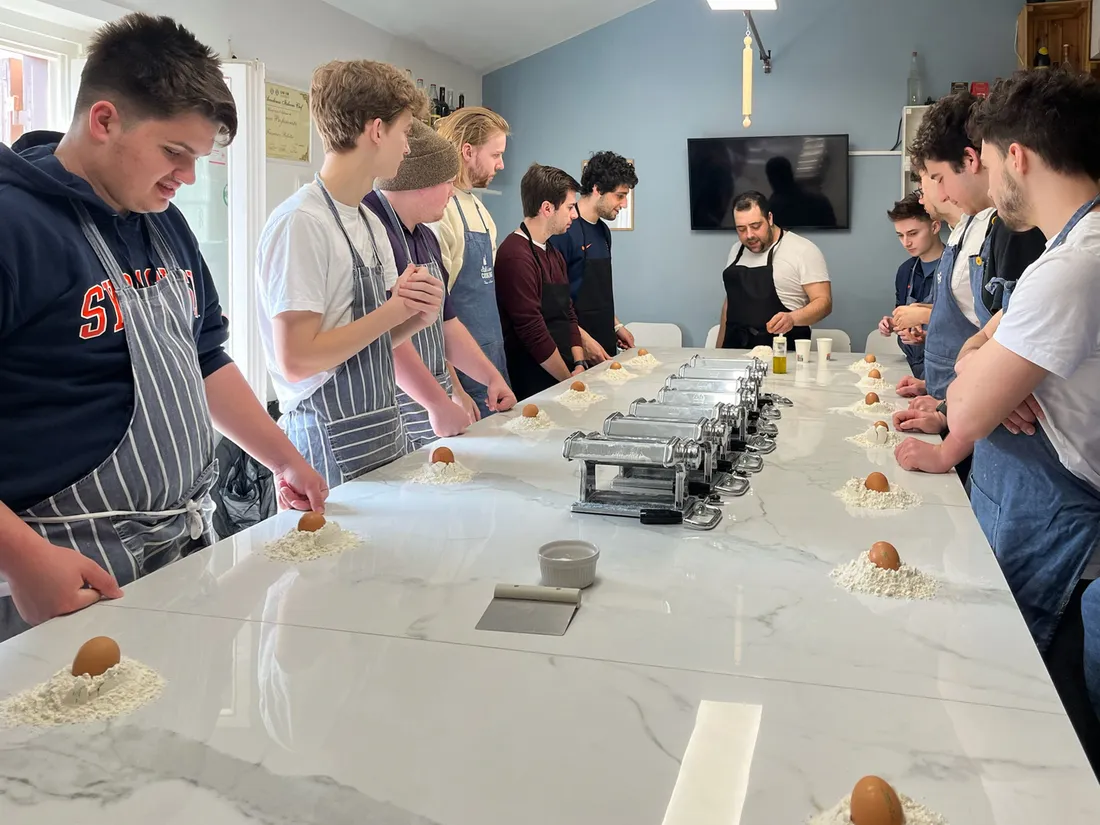
Other highlights, says Aidan Corr ’26, included activities such as pasta making and tours of renowned historic sites.
Another highlight for Corr was meeting and talking with some of the top executives in his field. “We got to talk with Bobby Gardiner of AC Milan [Arsenal F.C.]. He encouraged us to take the time to do thorough research and told me about other ways to get my work out there and noticed,” Corr says. “There were so many great takeaways from this trip. I’m excited to use them on my own path forward.”
There were so many great takeaways from this trip. I’m excited to use them on my own path forward.
Aidan Corr ’26
Learning How Plants and Stories Heal in Sarajevo
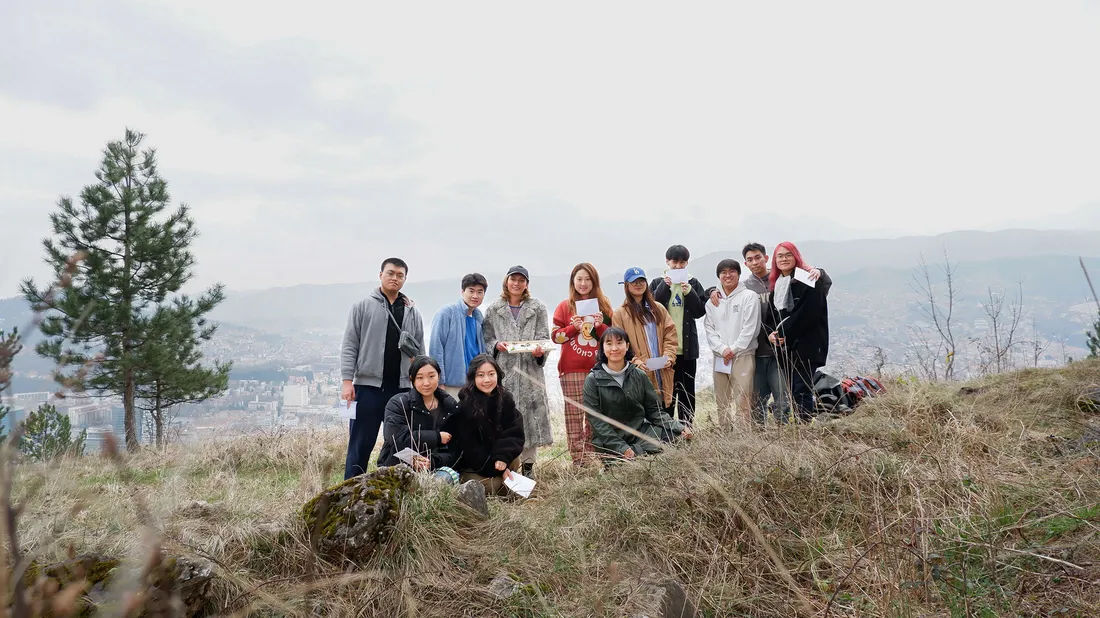
School of Architecture students learned about Sarajevo’s history, and traditional uses for regional plants, through a series of workshops developed with artist Smirna Kulenović (back row, third from left).
Another group of architecture students traveled to Sarajevo, the capital of Bosnia and Herzegovina, to gain insight on how communities heal in the aftermath of war. “As place-makers, how do we craft spaces of hope and benevolence in a city scarred by its past?” their professor, Christina Chi Zhang, a School of Architecture fellow, challenged them to consider.
In Sarajevo, students met local artists, architects and educators—many associated with a research center specializing in visual arts from post-conflict societies—explored the city and surrounding countryside, and learned about traditional uses for local plants. Their onsite research will inform designs of public seed libraries and storytelling spaces, which are intended to promote communal gathering, healing and appreciation of indigenous plants.
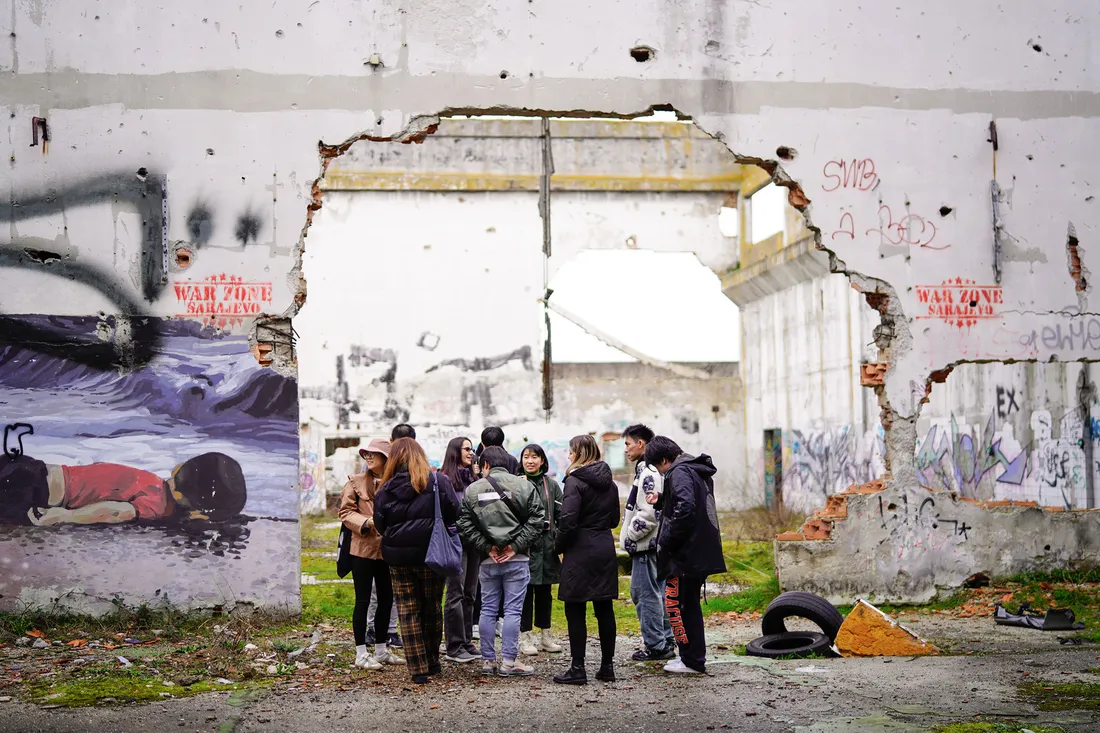
Terry Xu ’26 says one valuable insight he gained from on-site learning was that the physical evidence of war on Sarajevo’s infrastructure bore different significances among different residents.
For Haotian Alex Xue ’26, the trip underscored the value of experiencing a place in person. “Our travels, the places we visited, and our interactions with locals of all ages and backgrounds helped us gain a multifaceted perspective on Sarajevo that wouldn’t have been possible if we weren’t here,” he says.
Terry Xu ’26 was struck by how the physical scars of war, visible throughout the city, seemingly carried different significance across generations and individuals. This realization, he says, will inspire his design. “Seeing how people can have so many different emotions, opinions and attitudes has inspired me to think through how I can create space that’s open to everyone—not only people who come here to heal their traumatic past, but also those wanting to enjoy their present and future.”
Seeing how people can have so many different emotions, opinions and attitudes has inspired me to think through how I can create space that’s open to everyone.
Terry Xu ’26

